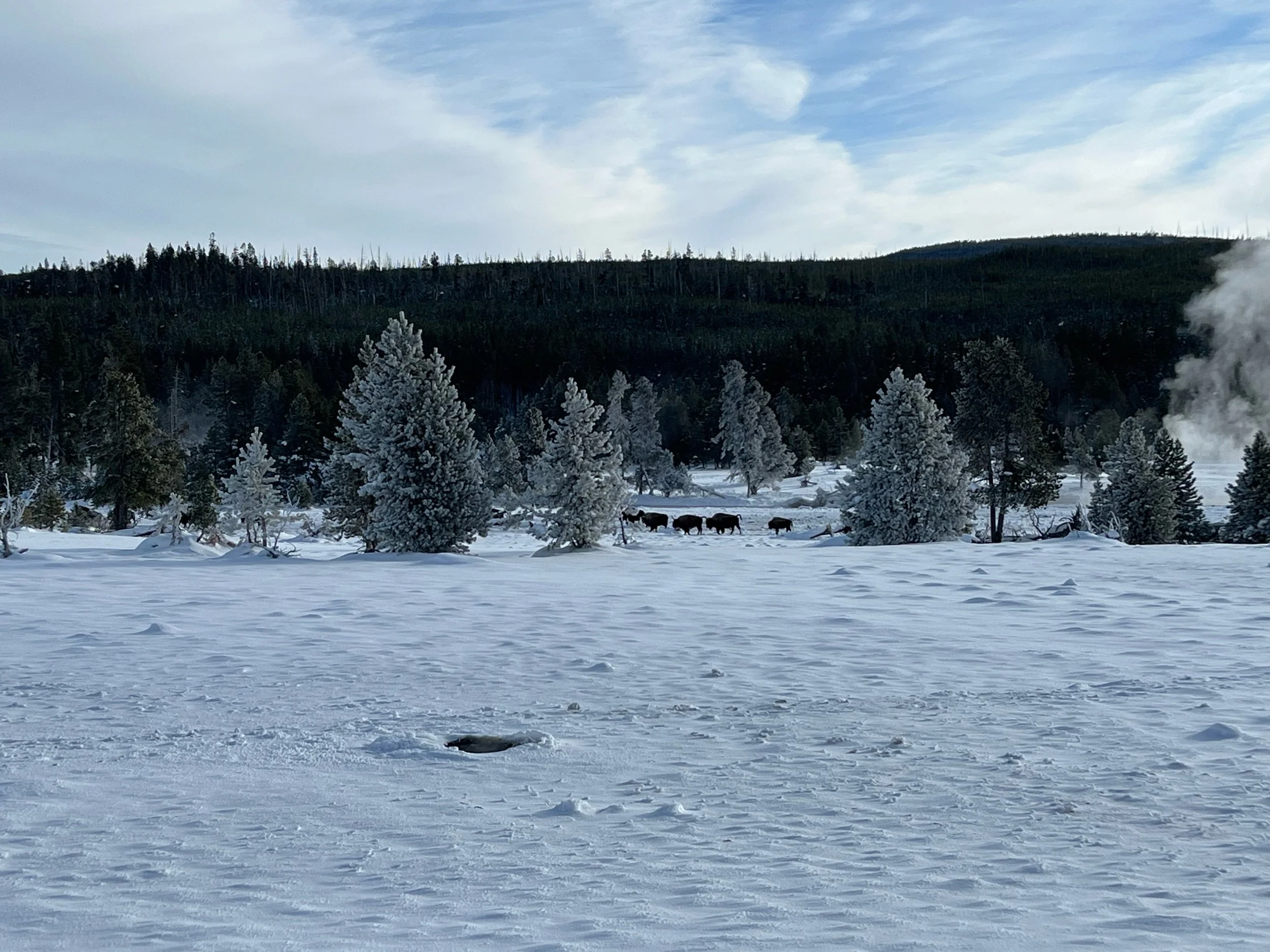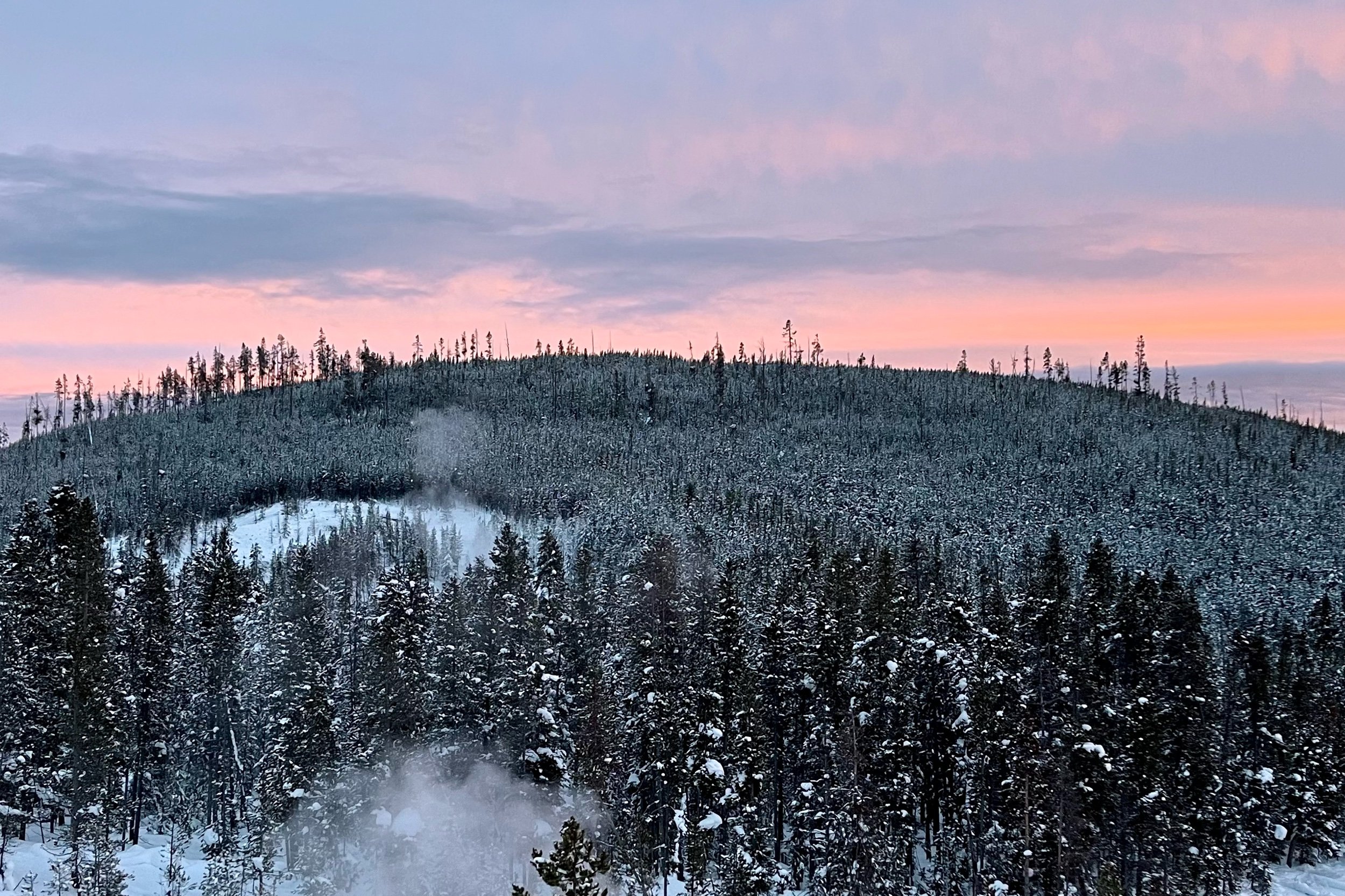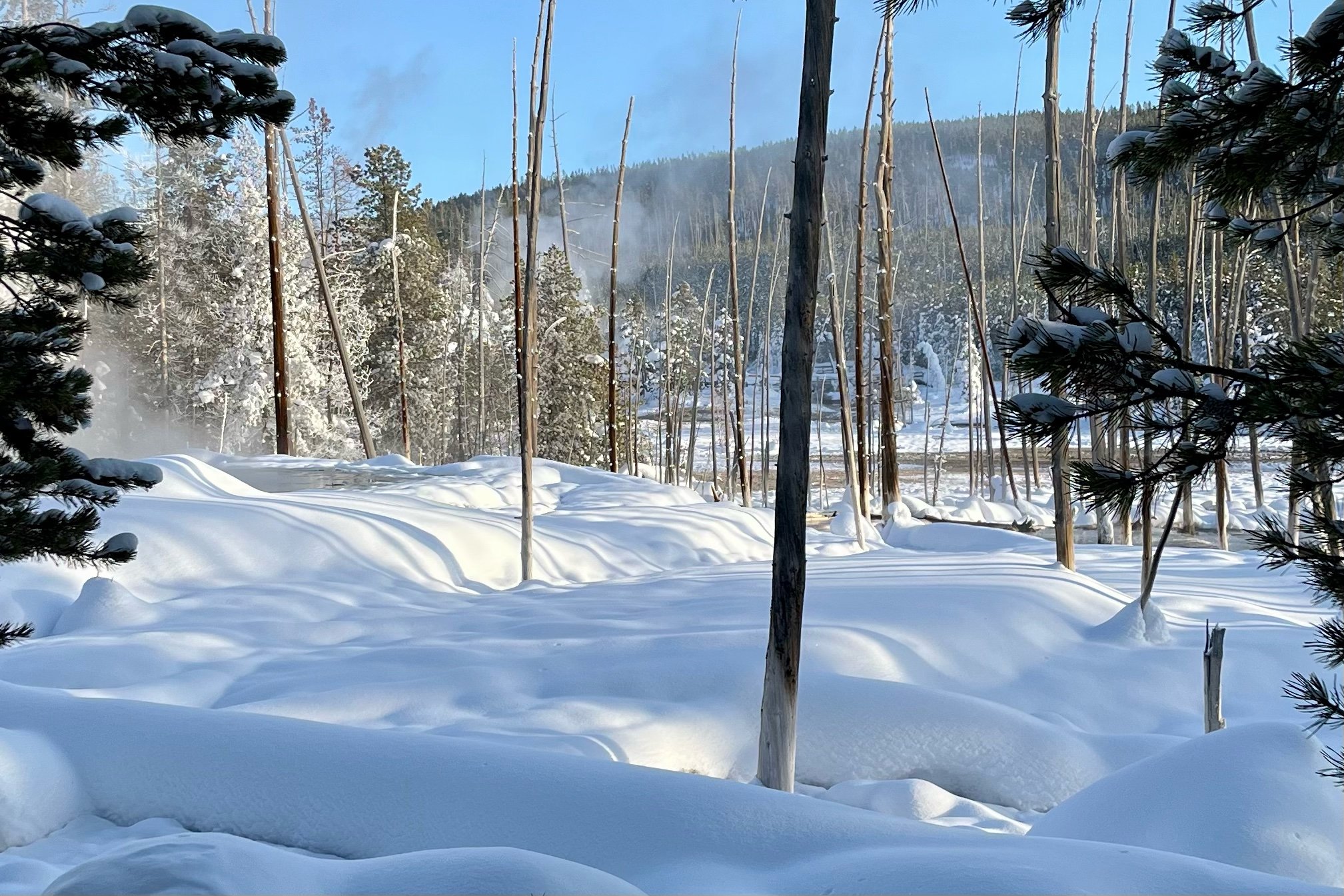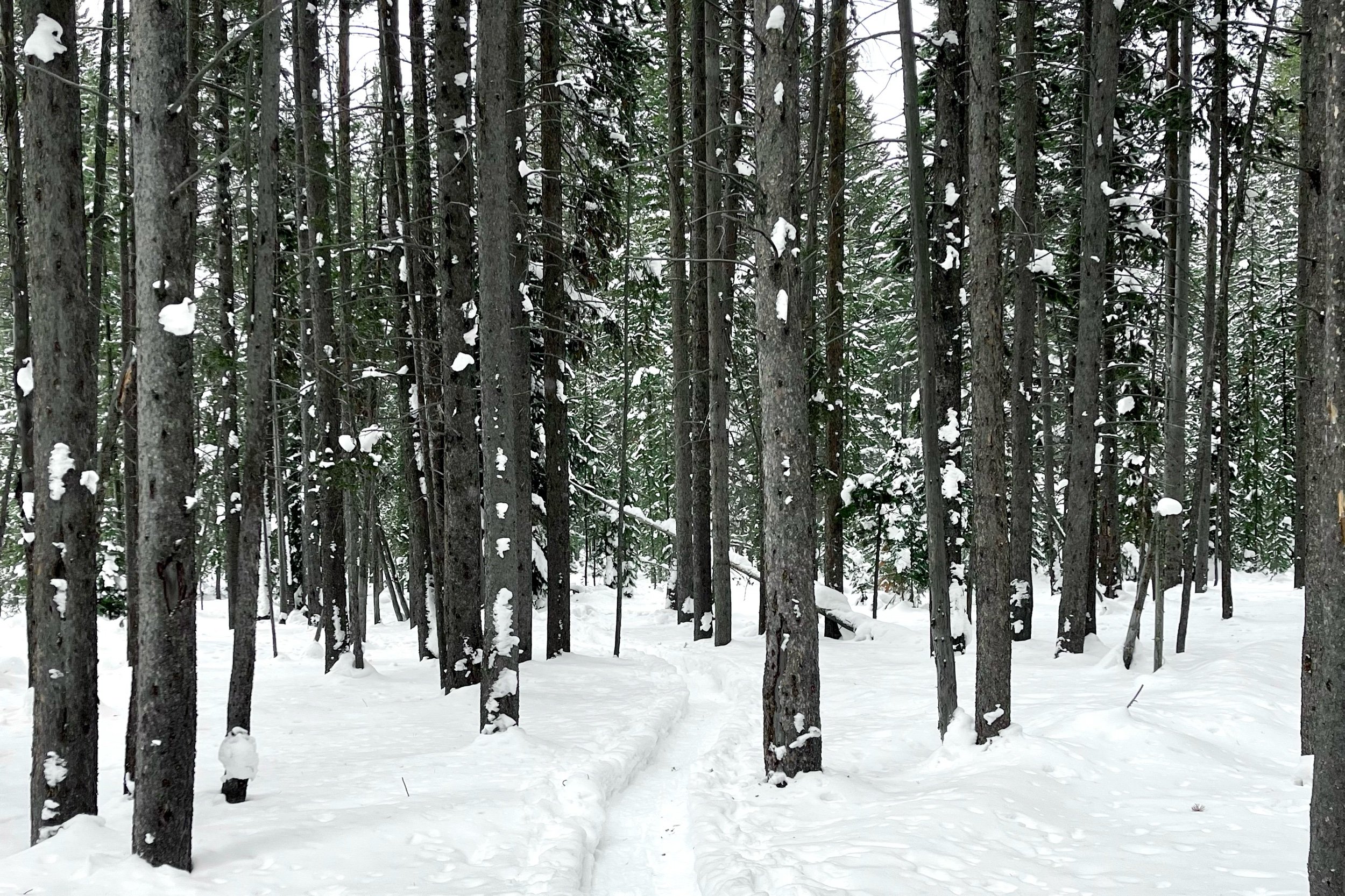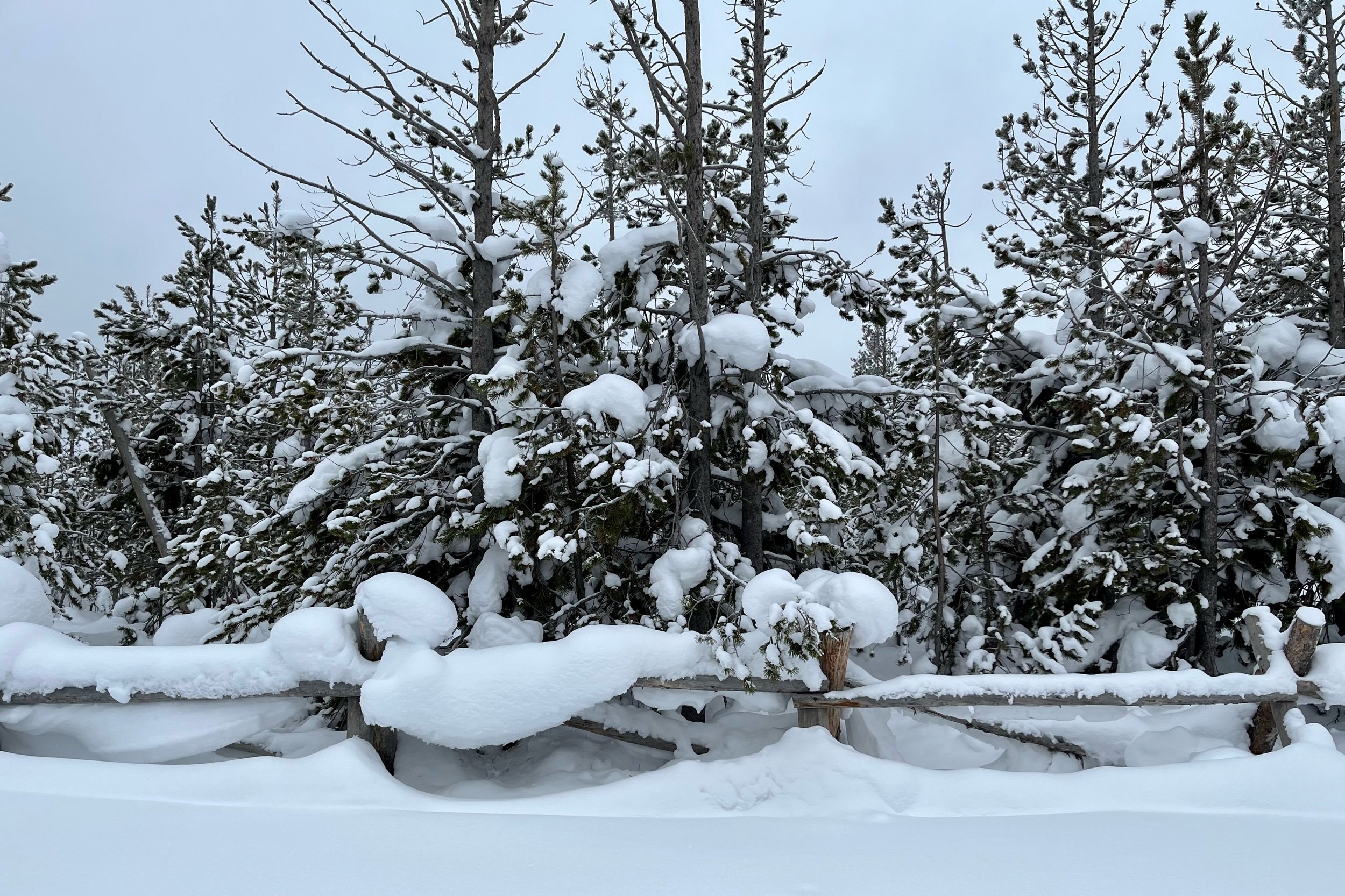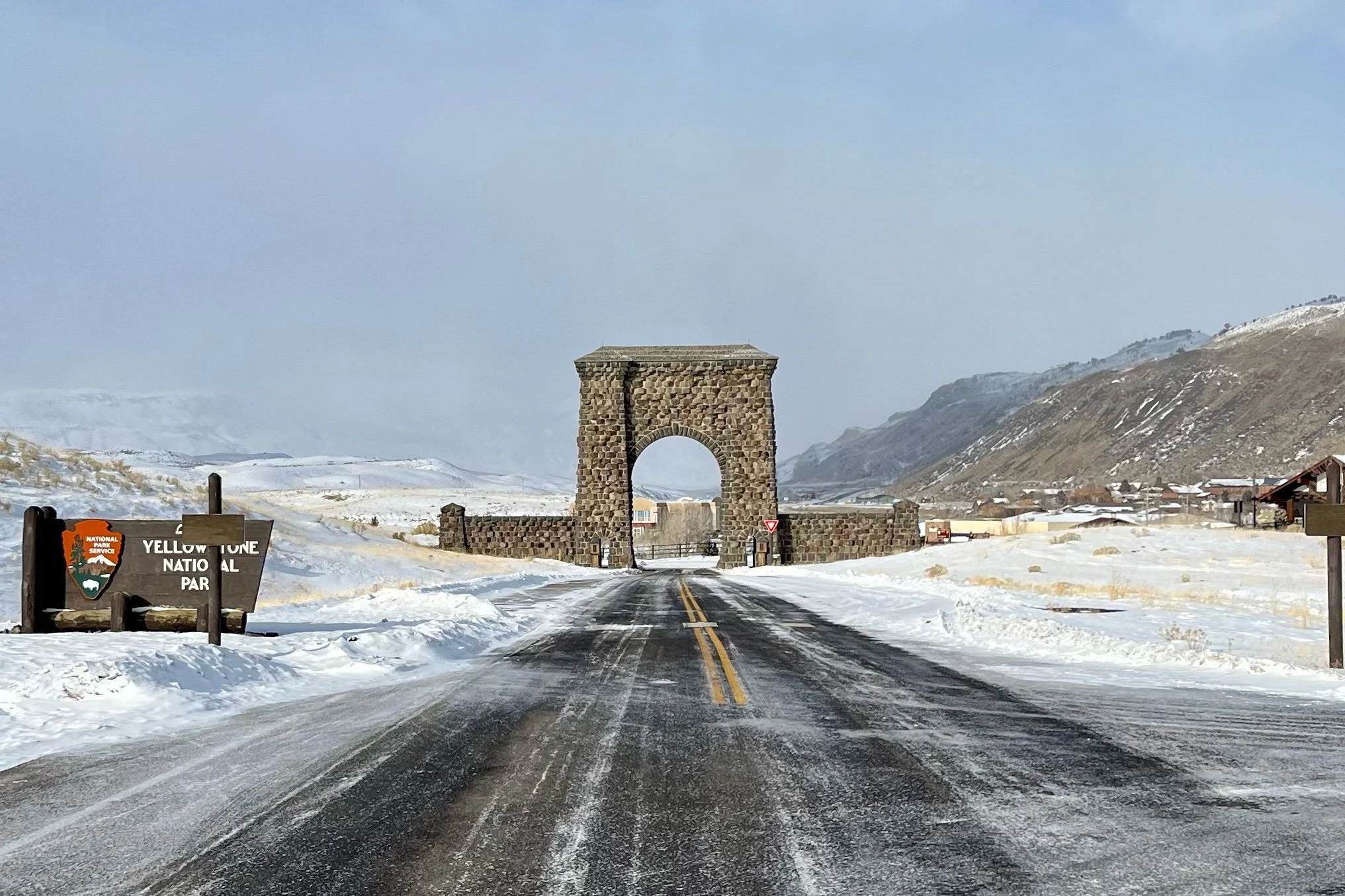Of Trees and Things
Whilst we were in Yellowstone, the fires of 1988 were referred to numerous times. There were several fires that burned over a number of months and early fall those fires joined up into a huge conflagration that eventually burnt nearly 40% of the park and was stopped eventually by an unseasonal snowfall. Because the environment of Yellowstone is so cold, things grow and decompose very slowly so the effects of the fires are still very noticeable. The two most obvious are in the trees: the skeletons of the trees that didn’t burn to ash are still standing all across the forest like spindly black spires above the new growth. The other effect is the new growth: the vast majority of the trees in the park are lodgepole pines which produce two types of pine cones one of which is a seronitous cone sealed with a waxy film. The cone doesn’t open and release its seed pods until it is exposed to temperatures over 50 degrees. These cones are present on about 40% of the pine trees and so a great number of seeds were activated as a result of the fires all growing together and so close that only the smallest of animals can make their way through parts of the forest. Side note: everything in Yellowstone is protected so humans can’t move anything, plant anything, kill anything or mimic anything.
Still on trees but a different environmental impact, the park is also filled with ‘drowned trees’ or Bobby Socks trees. The geothermal activity is highly dynamic and what was a ‘normal’ patch of dirt for a tree growing in can overnight become an active geothermal zone. When this happens, the water the tree is drawing up from the ground is laden with silica and over time the base of the tree solidifies or petrifies and the rest of the tree dies above it. What is left is a forest of dead tree trunks with white ‘socks’ on!
One of my favourite activities whilst we were in Yellowstone was a guided snowshoe through the woods. Side note: snowshoeing is a hundred times better than breaking trail without them!! We had a fabulous guide who frequently pointed out various plant life as we went. Some highlights: Old man’s beard, also known as Methuselah’s beard, is a lichen that is getting rarer as it is incredibly sensitive to air quality. It was stunning to visibly see this sensitivity: closer to the lodge, the lichen were all small and the further into the woods we got the bigger it grew. We also saw a native parasitic mistletoe called dwarf mistletoe which grows on the branches of the Lodge Pole Pine trees. At the site of where the mistletoe grows, the tree responds with a dense growth on the branch which look like a witches broomstick. Once you recognise the broomsticks, they are everywhere! We also learnt how to identify the very poisonous Wolf Lichen - not to be mistaken with the very similar but very beneficial lungmoss that can be made into a tea.
The Weather Report
The weather from the forests of Yellowstone


